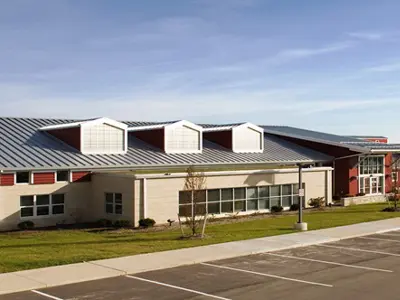From the Michigan State Police:
1. Slow down and allow at least 12 car lengths (200 feet) between your vehicle and the snowplow.
If you can’t see the snowplow’s mirrors, the driver can’t see you. Hanging back will also give you better visibility if the plow is creating a “snow cloud,” and more reaction time to hit the brakes if the snowplow stops (which they often do). Another good reason to stay back: the snowplow may be spreading salt, sand and/or calcium chloride.
2. Do not pass
While it may be tedious to be stuck behind a slow-moving snowplow, you’re better off to hang back and not attempt to pass. Here’s why:
- Snowplows are heavy! They can weigh as much as 30 tons. A passenger vehicle weighs in at around 2 tons.
- Snowplows can be unpredictable. They make wide turns and sometimes overlap lanes.
- Plow blades are sharp. In a collision, the blade of the plow can tear apart a smaller vehicle.
- Wing plows can be invisible. The wing plow—a 10-foot plow on the side of the truck which extends 2 to 10 feet beyond the truck’s width—can weigh nearly as much as a compact car. While in use, it can kick up enough snow to obscure it completely from view.
- It’s the law (on one side, anyway). It is illegal in Michigan to pass a snowplow on the right. And while it’s not illegal to pass on the left, you should do so with extreme caution.
3. When you meet a snowplow
If you meet a snowplow coming in the opposite direction (such as on a two-lane road), slow down by taking your foot off the accelerator, turn on your windshield wipers and increase your distance from the centerline (if you can do so safely).
4. Move over for stopped snowplows
A snowplow is considered an authorized vehicle for purposes of Michigan’s Move Over law. If you see a stationary snowplow on the side of the road, you must slow down to at least 10 mph slower than the speed limit and move over to an open lane. If this is not possible, slow down and pass, allowing as much room as possible. Violating the law can result in penalties and fines.



 734.794.6320
734.794.6320



